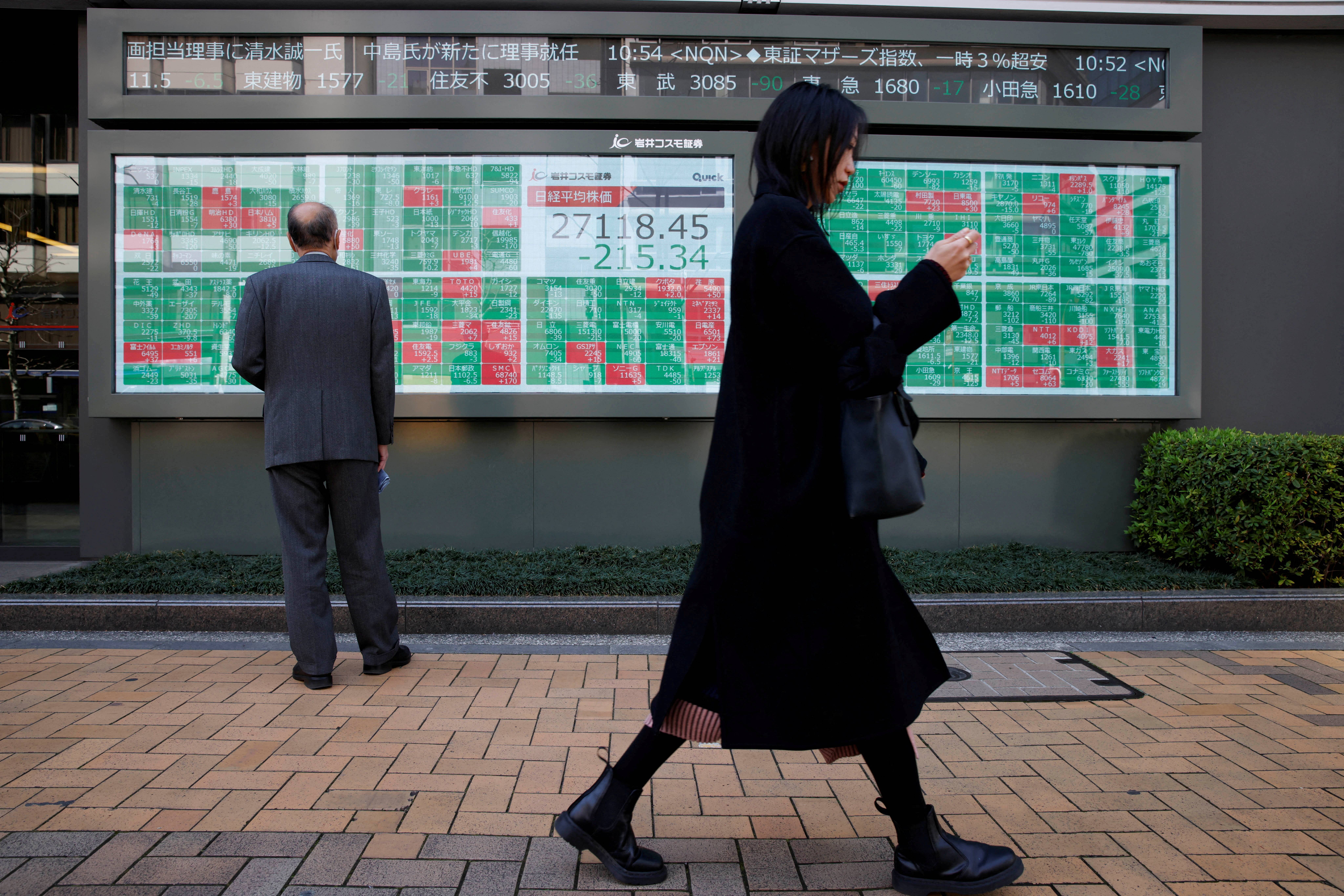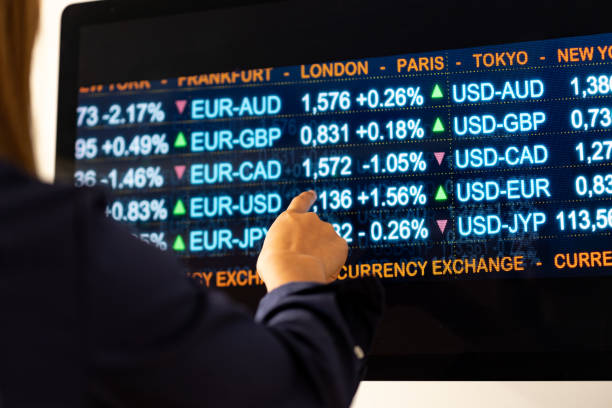Global stocks set for best week in a year, focus turns to U.S. jobs

A woman walks past a man examining an electronic board showing Japan's Nikkei average and stock quotations outside a brokerage, in Tokyo, Japan, March 20, 2023. REUTERS/Androniki Christodoulou/File Photo Acquire Licensing Rights
LONDON/SINGAPORE, Nov 3 (Reuters) - Global stocks were on track for their biggest weekly rise in a year on Friday as investors cheered a pause in U.S. interest rate hikes, while the dollar was on the back foot.
Trading on Friday was relatively subdued, however, as investors awaited key U.S. employment data later in the day.
The MSCI World stock index (.MIWD00000PUS) has risen 4.3% since Monday, which would be the largest weekly rise since November 2022. The index was up 0.23% on the day.
Europe's benchmark Stoxx 600 equity index (.STOXX) was 0.16% higher on Friday and was set for a weekly increase of 3.4%, its biggest since March. Germany's DAX (.GDAXI) was 0.18% higher and Britain's FTSE 100 (.FTSE) rose by the same amount.
The rally in stocks came as bond yields tumbled after the Fed left interest rates steady for a second meeting running on Wednesday and the Bank of England followed suit on Thursday.
Central bank officials stressed that more may need to be done to tackle inflation, but many investors believe the next move in borrowing costs is likely to be down.
"What you hear from basically all the major central banks over the last week..., in their mind I think they're all on hold," said Samuel Zief, head of global FX strategy at JPMorgan Private Bank. The European Central Bank held rates last week.
"Once the market can become convinced that all these central banks are on hold..., that can encourage bond yields to move lower."
The 10-year U.S. Treasury yield , the reference for borrowing rates around the world, dropped 20 basis points (bps) over Wednesday and Thursday and is now down around 36 bps since touching a 16-year high above 5% last week.
The yield, which moves inversely to the price, was unchanged at 4.666% on Friday.
A decision on Wednesday by the U.S. Treasury to issue less long-term debt than expected also fuelled the rally in bonds, as did data on Thursday suggesting the U.S. economy might finally be cooling.
The dollar index was down 0.16% at 106.03 on Friday and on track to fall 0.49% across the week, dragged lower by U.S. yields. The euro was up 0.15% at $1.064 and set for a 0.69% weekly gain.
U.S. S&P 500 stock index futures were 0.2% lower on Friday, pointing to a slight fall at the open after the index jumped 1.9% the previous day (.SPX).
Apple's Frankfurt-listed shares fell 2.3% after it delivered a sales forecast for the holiday quarter that missed Wall Street expectations. It was down around 3% in pre-market U.S. trading (AAPL.O).
Investor focus on Friday turned to the U.S. nonfarm payrolls data due at 1230 GMT (8.30 a.m. ET). Economists expect the U.S. economy added 180,000 jobs in October, after the blockbuster 336,000 increase in September.
Goldman Sachs chief economist Jan Hatzius wrote in a note to clients that the bank expects payrolls rose by 195,000, despite a 30,000-job drag from the autoworker strikes.
"We believe tight labor markets incentivize firms to frontload autumn and pre-holiday hiring," he said.
Oil prices were down for the week, in part because the Israel-Hamas war has not widened as some feared.
Brent crude oil futures were 3.8% lower since Monday at $87.04 a barrel, while U.S. crude traded at $82.67 a barrel, although both were up slightly on Friday.
Sam Bankman-Fried, founder of the collapsed crypto exchange FTX, was found guilty of stealing from customers on Thursday. There was no obvious market reaction, leaving bitcoin to hold steep recent gains at $34,269.
Reporting by Harry Robertson in London and Tom Westbrook in Singapore; editing by Jacqueline Wong, Miral Fahmy and Mark Heinrich
Our Standards: The Thomson Reuters Trust Principles.
How do futures traders review their trading?
Futures trading is a form of financial speculation that involves buying and selling contracts that represent the future delivery of an asset, such as a commodity, a currency, an index, or a stock. Futures traders aim to profit from the price movements of the underlying asset, without actually owning
Futures night trading hours
Futures are contracts that obligate the buyer or seller to exchange an asset or commodity at a specified future date and price. They are used for hedging, speculation, and arbitrage purposes in the global market. Futures can be based on various underlying assets, such as currencies, commodities, ind
How can futures efficiently increase the success rate of intraday trading?
Intraday trading is a form of trading that involves buying and selling securities within the same trading day, without holding any positions overnight. Intraday traders aim to profit from the short-term price fluctuations of the market, using various tools and strategies to analyze and execute trade
What are the factors that can affect how much money can be made in futures?
Futures trading is a form of financial speculation that involves buying and selling contracts that represent the future delivery of an asset, such as a commodity, a currency, an index, or a stock. Futures traders aim to profit from the price movements of the underlying asset, without actually owning








